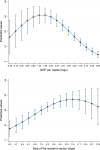RETRACTED ARTICLE: Predatory publishing in Scopus: evidence on cross-country differences
- PMID: 33583977
- PMCID: PMC7867864
- DOI: 10.1007/s11192-020-03852-4
RETRACTED ARTICLE: Predatory publishing in Scopus: evidence on cross-country differences
Abstract
Predatory publishing represents a major challenge to scholarly communication. This paper maps the infiltration of journals suspected of predatory practices into the citation database Scopus and examines cross-country differences in the propensity of scholars to publish in such journals. Using the names of "potential, possible, or probable" predatory journals and publishers on Beall's lists, we derived the ISSNs of 3,293 journals from Ulrichsweb and searched Scopus with them. 324 of journals that appear both in Beall's lists and Scopus with 164 thousand articles published over 2015-2017 were identified. Analysis of data for 172 countries in 4 fields of research indicates that there is a remarkable heterogeneity. In the most affected countries, including Kazakhstan and Indonesia, around 17% of articles fall into the predatory category, while some other countries have no predatory articles whatsoever. Countries with large research sectors at the medium level of economic development, especially in Asia and North Africa, tend to be most susceptible to predatory publishing. Arab, oil-rich and/or eastern countries also appear to be particularly vulnerable. Policymakers and stakeholders in these and other developing countries need to pay more attention to the quality of research evaluation.
Supplementary information: The online version contains supplementary material available at (10.1007/s11192-020-03852-4).
Keywords: Academic misconduct; Beall’s list; Open access; Predatory journal; Research policy; Research system.
© Akadémiai Kiadó, Budapest, Hungary 2021.
Figures


Similar articles
-
Predatory Publishing in Orthopaedic Research.J Bone Joint Surg Am. 2018 Nov 7;100(21):e138. doi: 10.2106/JBJS.17.01569. J Bone Joint Surg Am. 2018. PMID: 30399085
-
'Predatory' open access: a longitudinal study of article volumes and market characteristics.BMC Med. 2015 Oct 1;13:230. doi: 10.1186/s12916-015-0469-2. BMC Med. 2015. PMID: 26423063 Free PMC article.
-
Blacklists and Whitelists To Tackle Predatory Publishing: a Cross-Sectional Comparison and Thematic Analysis.mBio. 2019 Jun 4;10(3):e00411-19. doi: 10.1128/mBio.00411-19. mBio. 2019. PMID: 31164459 Free PMC article.
-
Investigating Country-Specific Perceptions of Predatory Journals and Their Impact on Scholarly Integrity: A Systematic Review.Cureus. 2024 Jul 16;16(7):e64674. doi: 10.7759/cureus.64674. eCollection 2024 Jul. Cureus. 2024. PMID: 39149624 Free PMC article. Review.
-
Avoiding predatory publishing for early career neurosurgeons: what should you know before you submit?Acta Neurochir (Wien). 2021 Jan;163(1):1-8. doi: 10.1007/s00701-020-04546-9. Epub 2020 Aug 26. Acta Neurochir (Wien). 2021. PMID: 32845360 Review.
Cited by
-
A credit-like rating system to determine the legitimacy of scientific journals and publishers.Scientometrics. 2021;126(10):8589-8616. doi: 10.1007/s11192-021-04118-3. Epub 2021 Aug 18. Scientometrics. 2021. PMID: 34421155 Free PMC article.
-
Predatory Journals and Publishers - Dilemmas: How to Assess it and How to Avoid it?Med Arch. 2021 Oct;75(5):328-334. doi: 10.5455/medarh.2021.75.328-334. Med Arch. 2021. PMID: 35169352 Free PMC article. No abstract available.
-
Keep calm and carry on: moral panic, predatory publishers, peer review, and the emperor's new clothes.J Med Libr Assoc. 2022 Apr 1;110(2):233-239. doi: 10.5195/jmla.2022.1441. J Med Libr Assoc. 2022. PMID: 35440900 Free PMC article.
-
Genetic Studies of Metabolic Syndrome in Arab Populations: A Systematic Review and Meta-Analysis.Front Genet. 2021 Nov 18;12:733746. doi: 10.3389/fgene.2021.733746. eCollection 2021. Front Genet. 2021. PMID: 34868209 Free PMC article. Review.
-
Mastering the scientific peer review process: tips for young authors from a young senior editor.J For Res (Harbin). 2022;33(1):1-20. doi: 10.1007/s11676-021-01388-8. Epub 2021 Sep 16. J For Res (Harbin). 2022. PMID: 34545272 Free PMC article.
References
-
- Baguess M, Sylos-Labini M, Zinovyeva N. A Walk on the Wild Side: `Predatory' journals and information asymmetries in scientific evaluations. Research Policy. 2019;48(2):462–477. doi: 10.1016/j.respol.2018.04.013. - DOI
-
- Beall J. Predatory publishing is just one of the consequences of gold open access. Learned Publishing. 2013;26(2):79–84. doi: 10.1087/20130203. - DOI
-
- Beall, J. (2015). Criteria for Determining Predatory Open-Access Publishers. Retrieved May 19, 2018, from https://beallslist.weebly.com/uploads/3/0/9/5/30958339/criteria-2015.pdf.
-
- Beall, J. (2016). Scholarly Open Access: Critical analysis of scholarly open-access publishing (Beall’s blog). Retrieved April 1, 2016, from https://scholarlyoa.com; shutdown January 2018, archived at https://archive.org/web/.
-
- Berger M, Cirasella J. Beyond Beall’s list better understanding predatory publishers. College and Research Libraries News. 2015;76:132–135. doi: 10.5860/crln.76.3.9277. - DOI
LinkOut - more resources
Full Text Sources
Other Literature Sources
